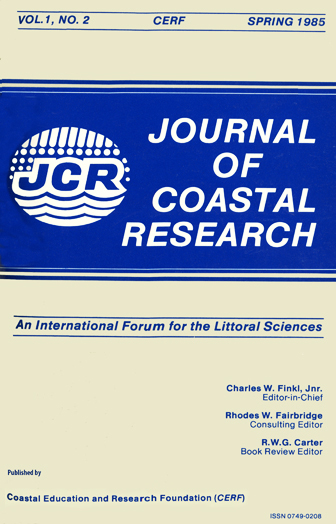The Role of Beach Profile Configuration in the Discrimination Between Differing
Keywords:
Beach profile, berm development, clastic beach, facies modeling, graphical standardization procedure, littoral environment, nearshore depositional environment, South WalesAbstract
The role of beach profile configuration in facies modeling of coarse clastic (pebble) beaches is investigated because of the lack of primary sedimentary structures. Classification of 402 profiles gathered from two South Wales beaches is undertaken using a graphical standardization procedure which gives rise to 10 morphological types. A one dimensional expression is derived for each profile using the concepts of hypsographic curves and hypsometric integrals. The resulting 402 integrals are subjected to a non parametric test which confirms that the methodology can distinguish between concave and linear profile macro-forms, both with and without berm development, at the 99.9%, confidence level. The importance of berm development and position in relation to differing nearshore depositional environments is indicated by previously published work. Use is made of this information in applying the above methodology to elucidate beach morphological changes on the two study beaches. A number of original graphical methods are used to identify patterns of morphological change. Although time-related stochastic modeling is not attempted on the data, the methodology is presented as the best means of deriving information for this purpose. As the beach profile provides a finger-print of previous wash/backwash action, the development of a procedure sensitive enough to take account of berm formation means that an analytical tool is now available which can effectively discriminate between nearshore depositional environments, as a first step towards fuller textural analysis of facies type.


